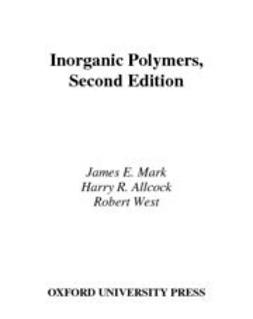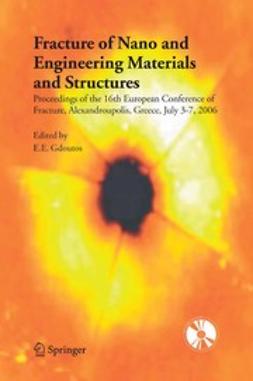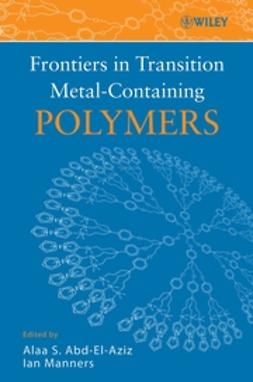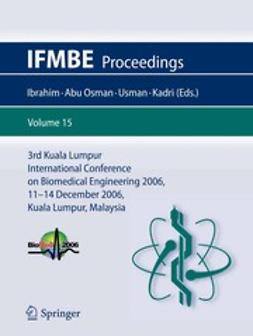Allcock, Harry R.
Inorganic Polymers
I. Introduction
1.1. What Is a Polymer
1.2. How Polymers Are Depicted
1.3. Reasons for Interest in Organic Polymers
1.4. Types of Inorganic Polymers
1.5. Special Characteristics of Polymers
II. Characterization of Inorganic Polymers
2.1. Molecular Weights
2.2. Molecular Weight Distribution
2.3. Other Structural Features
2.4. Chain Statistics
2.5. Solubility Considerations
2.6. Crystallinity
2.7. Transitions
2.8. Spectroscopy
2.9. Mechanical Properties
III. Polyphosphazenes
3.1. Introduction
3.2. History
3.3. Alternative Synthesis Routes to Linear Polymers
3.4. Surface Reactions of Polyphosphazenes
3.5. Hybrid Systems through Block, Comb, or Ring-Linked Copolymers
3.6. Hybrid Systems through Composites
3.7. Organometallic Polyphosphazenes
3.8. Small-Molecule Models
3.9. Molecular Structure of Linear Polyphosphazenes
3.10. Structure-Property Relationships
3.11. Applications of Polyphosphazenes
3.12. Optical and Photonic Polymers
3.13. Polymers Related to Polyphosphazenes
3.14. Conclusions
IV. Polysiloxanes and Related Polymers
4.1. Introduction
4.2. History
4.3. Nomenclature
4.4. Preparation and Analysis
4.5. General Properties
4.6. Reactive Homopolymers
4.7. Elastomeric Networks
4.8. Some New Characterization Techniques Useful for Polysiloxanes
4.9. Copolymers and Interpenetrating Networks
4.10. Applications
V. Polysilanes and Related Polymers
5.1. Introduction
5.2. History
5.3. Synthesis
5.4. Chemical Modification of Polysilanes
5.5. Physical Properties of Polysilanes
5.6. Electronic Properties of Polysilanes
5.7. Chromotropsism of Polysilanes
5.8. Electrical Conductivity and Photoconductivity
5.9. Luminescence of Polysilanes
5.10. Photodegradation of Polysilanes
5.11. Cross-Linking
5.12. Structural Arrangements in Polysilanes
5.13. Technology of Polysilanes
5.14. Additional Readings
VI. Ferrocene-Based Polymers, and Additional Phosphorus- and Boron-Containing Polymers
6.1. Ferrocene-Based Polymers
6.2. Other Phosphorus-Containing Polymers
6.3. Boron-Containing Polymers
VII. Miscellaneous Inorganic Polymers
7.1. Introduction
7.2. Other Silicon-Containing Polymers
7.3. Polygermanes
7.4. Polymeric Sulfur and Selenium
7.5. Other Sulfer-Containing Polymers
7.6. Aluminum-Containing Polymers
7.7. Tin-Containing Polymers
7.8. Arsenic-Containing Polymers
7.9. Metal Organometallic Polymers
7.10. Other Organometallic Species for Sol-Gel Processes
VIII. Inorganic-Organic Hybrid Composites
8.1. Sol-Gel Ceramics
8.2. Fillers in Elastomers
8.3. Polymer-Modified Ceramics
IX. Preceramic Inorganic Polymers
9.1. Overview of Ceramic Aspects
9.2. The Sol-Gel Process to Oxide Ceramics
9.3. Carbon Filter
9.4. Silicon Carbide
9.5. Silicon Nitride
9.6. Boron Nitride
9.7. Boron Carbide
9.8. Aluminum Nitride
9.9. Phosphorus Nitride
9.10. Poly(ferrocenylsilanes) as Ceramic Precursors
1.1. What Is a Polymer
1.2. How Polymers Are Depicted
1.3. Reasons for Interest in Organic Polymers
1.4. Types of Inorganic Polymers
1.5. Special Characteristics of Polymers
II. Characterization of Inorganic Polymers
2.1. Molecular Weights
2.2. Molecular Weight Distribution
2.3. Other Structural Features
2.4. Chain Statistics
2.5. Solubility Considerations
2.6. Crystallinity
2.7. Transitions
2.8. Spectroscopy
2.9. Mechanical Properties
III. Polyphosphazenes
3.1. Introduction
3.2. History
3.3. Alternative Synthesis Routes to Linear Polymers
3.4. Surface Reactions of Polyphosphazenes
3.5. Hybrid Systems through Block, Comb, or Ring-Linked Copolymers
3.6. Hybrid Systems through Composites
3.7. Organometallic Polyphosphazenes
3.8. Small-Molecule Models
3.9. Molecular Structure of Linear Polyphosphazenes
3.10. Structure-Property Relationships
3.11. Applications of Polyphosphazenes
3.12. Optical and Photonic Polymers
3.13. Polymers Related to Polyphosphazenes
3.14. Conclusions
IV. Polysiloxanes and Related Polymers
4.1. Introduction
4.2. History
4.3. Nomenclature
4.4. Preparation and Analysis
4.5. General Properties
4.6. Reactive Homopolymers
4.7. Elastomeric Networks
4.8. Some New Characterization Techniques Useful for Polysiloxanes
4.9. Copolymers and Interpenetrating Networks
4.10. Applications
V. Polysilanes and Related Polymers
5.1. Introduction
5.2. History
5.3. Synthesis
5.4. Chemical Modification of Polysilanes
5.5. Physical Properties of Polysilanes
5.6. Electronic Properties of Polysilanes
5.7. Chromotropsism of Polysilanes
5.8. Electrical Conductivity and Photoconductivity
5.9. Luminescence of Polysilanes
5.10. Photodegradation of Polysilanes
5.11. Cross-Linking
5.12. Structural Arrangements in Polysilanes
5.13. Technology of Polysilanes
5.14. Additional Readings
VI. Ferrocene-Based Polymers, and Additional Phosphorus- and Boron-Containing Polymers
6.1. Ferrocene-Based Polymers
6.2. Other Phosphorus-Containing Polymers
6.3. Boron-Containing Polymers
VII. Miscellaneous Inorganic Polymers
7.1. Introduction
7.2. Other Silicon-Containing Polymers
7.3. Polygermanes
7.4. Polymeric Sulfur and Selenium
7.5. Other Sulfer-Containing Polymers
7.6. Aluminum-Containing Polymers
7.7. Tin-Containing Polymers
7.8. Arsenic-Containing Polymers
7.9. Metal Organometallic Polymers
7.10. Other Organometallic Species for Sol-Gel Processes
VIII. Inorganic-Organic Hybrid Composites
8.1. Sol-Gel Ceramics
8.2. Fillers in Elastomers
8.3. Polymer-Modified Ceramics
IX. Preceramic Inorganic Polymers
9.1. Overview of Ceramic Aspects
9.2. The Sol-Gel Process to Oxide Ceramics
9.3. Carbon Filter
9.4. Silicon Carbide
9.5. Silicon Nitride
9.6. Boron Nitride
9.7. Boron Carbide
9.8. Aluminum Nitride
9.9. Phosphorus Nitride
9.10. Poly(ferrocenylsilanes) as Ceramic Precursors
- Author(s)
- Allcock, Harry R.
- Mark, James E.
- West, Robert
- Publisher
- Oxford University Press
- Publication year
- 2005
- Language
- en
- Edition
- 1
- Category
- Technology, Energy, Traffic
- Format
- Ebook
- eISBN (PDF)
- 9780195351316







